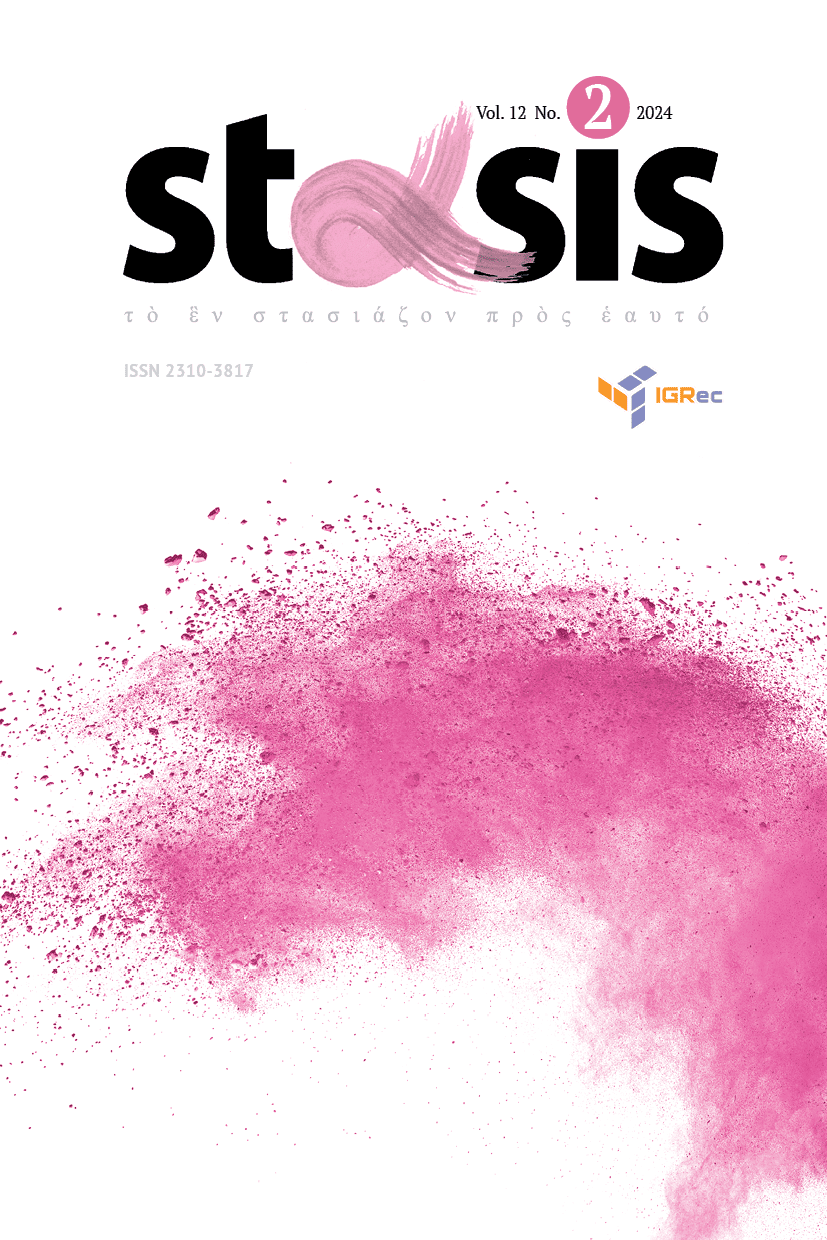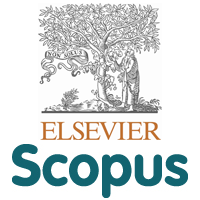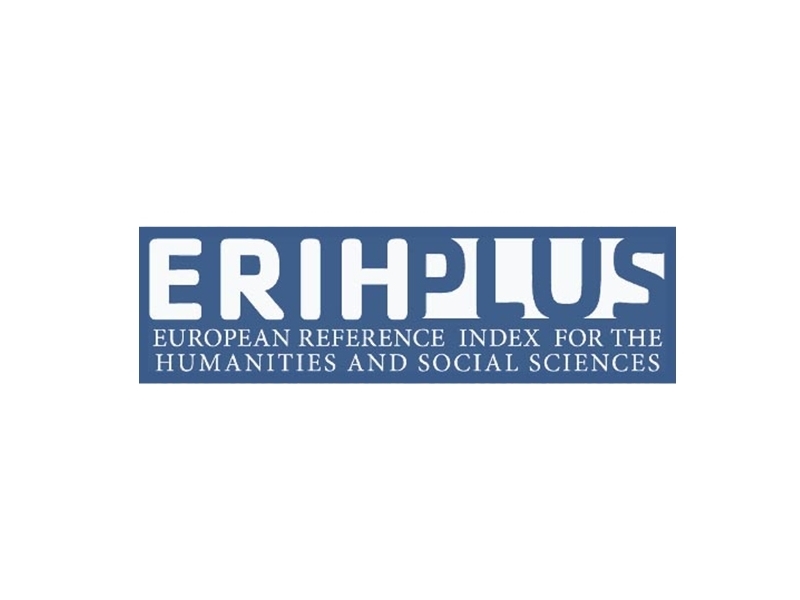“The Flower- Faced Wife”: between cyborg and scapegoat
Abstract
The article problematizes the figure of the excluded as a category circulating within the social mechanism and determining the balance of power between the participants of communication. As a case study we use a story from the Welsh epic Mabinogion, in which Llew Llaw Gifs, doomed to celibacy, gets magician Gwydion to make a girl out of flowers—Blodewed—to be his wife. According to the story, Blodewed (Welsh for “flower face”), proves to be an unfaithful and treacherous wife and attempts to kill Llew, after which she is turned into an owl by Gwydion as punishment. In the article, Flowerface functions as a conceptual figure at the intersection of such disciplinary fields as political philosophy, philosophical anthropology, bioethics, and feminist thought. Its history correlates equally with notions of the “machine” that revolts against its creators—the cyborg (that is, an instrument that ceases to be a means but claims the status of an end in itself), René Girard's notion of texts of persecution, and the notion of the excluded, which we take from political philosophy. The authors show the possibilities and limitations of a variety of approaches, of which the Cyborgian and Girardian approaches are chosen as key, in revising and reinterpreting texts that hide behind the mask of the beast of victims. It is argued that Girard has an implicit metaphysics that works not only to detect scapegoats, but prepares the ground through the opposition of the differentiated/indistinguishable for such sacrifice. It is also argued that “anti-historicism.” As a work of new dialectics and political economy, Donna Haraway's Cyborgian abandons the pair of distinguishable/indistinguishable, of “difference”—in favor of contradictions. But at the same time, the text itself turns out to be a pure manifesto that has limited political effects; this is exemplified in the reception of the cyborgian as a “metaphor.”
References
Benjamin, Walter (2012). “K kritike nasiliya” [On the Critique of Violence], in: Uchenie o podobii. Mediaesteticheskie proizvedeniya, 65–100.. RGGU Publ. (In Russian)
Bloch, Ernst (1991). “Printsip nadezhdy” [The Principle of Hope], in: Utopiya i utopicheskoe myshlenie. Progress Publ. 49–79. (In Russian)
Wittig, Monique (2002). Pryamoe myshlenie i drugie esse [Direct Thinking and Other Essays]. Idea- Press Publ. (In Russian)
Jagose, Annamarie (2008). Vvedenie v kvir-teoriyu [Introduction to Queer Theory]. Kanon+ Publ. (In Russian)
Durkheim, Émile (1998). Elementarnye formy religioznoy zhizni. Totemicheskaya sistema v [The Elementary Forms of Religious Life. The Totemic System in Australia]. + Publ.. (In Russian)
Girard, René (2010). Kozyol otpushcheniya [The Scapegoat]. Izdatel’stvo Ivana Limbakha Publ. (In Russian)
Girard, René. “Chuma v literature i mifakh” [Plague in Literature and Myths], in: Baten’ka, da vy Transformer, available at https://batenka.ru/aesthetics/reading/
girard [accessed 13 April 2025]. (In Russian)
Prokof’ev, Filipp (2011). “Tipologiya izgnannikov i vospriyatie ‘izgoystva’ v drev- yuridicheskoy traditsii” [Typology of Exiles and the Perception of “Outsidership” in the Ancient Irish Legal Tradition], in: Atlantika: zapiski po istoricheskoy poetike, 50–70. Izdatel’stvo Moskovskogo universiteta Publ. (In Russian)
Lyotard, Jean- François (1998). Sostoyanie postmoderna [The Postmodern Condition]. Publ. (In Russian)
Liu, Ken (2019). “Dobroy okhoty!” [Good Hunting!], in: Bumazhnyy zverinets [Paper
Menagerie], available at https://royallib.com/book/lyu_ken/bumagniy_zverinets_sbornik.html [accessed 13 April 2025]. (In Russian)
Mabinogion (1995). Volshebnye legendy Uel’sa [Magical Legends of Wales]. Ladomir Publ. (In Russian)
Smith, Dorothy (2000). “Sotsiologicheskaya teoriya: metody patriarkhatnogo pis’ma” [Sociological Theory: Methods of Patriarchal Writing], in: Khrestomatiya feministskikh tekstov, 29–64. Dmitriy Bulanin Publ. (In Russian)
Tlostanova, Madina (2015). “Zapadnyy antihumanizm ili nezapadnyy gumanizm drugogo?” [Western Antihumanism or a Non- Western Humanism of the Other?], Filosofita i kul’tura 3: 402–412. (In Russian)
Heidegger, Martin (1993). “Preodoleniye metafiziki” [The Overcoming of Metaphysics], in: Vremya i bytiye [Time and Being], 177–192. Respublika Publ. pp.
Haraway, Donna (2005). “Manifest kiborgov: nauka, tekhnologiya i sotsialisticheskiy feminizm 1980-kh gg.” [A Cyborg Manifesto: Science, Technology, and Socialist
Feminism in the 1980s], in: Gendernaya teoriya i iskusstvo: 1970–2000 [Gender Theory and Art: 1970–2000], 322–377. Aleteiya Publ. (In Russian)
Copyright (c) 2025 Stasis

This work is licensed under a Creative Commons Attribution 4.0 International License.







